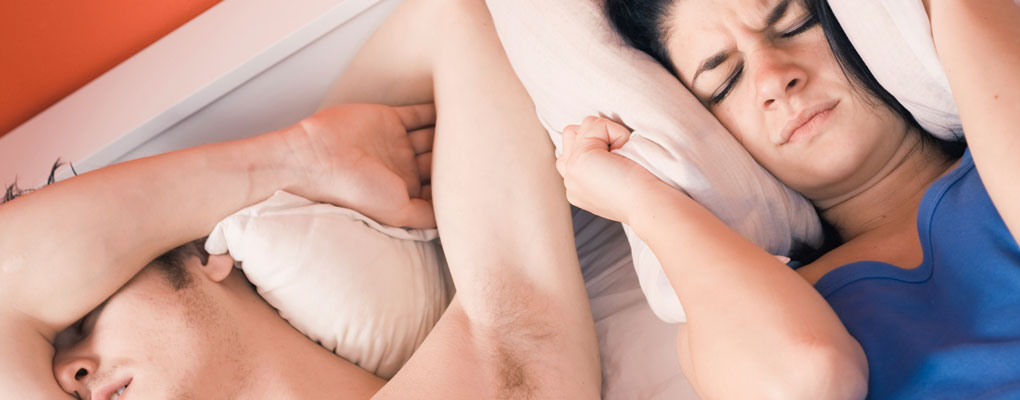
Sleep Apnoea is a common disorder that often goes undiagnosed. Most people do not even know they have the condition as it occurs during the night, whilst you are sleeping. In a nut shell, sleep apnoea is a chronic condition that disrupts the quality of your sleep due to pauses in breathing or complete cessation of breathing for up to one minute.
The mechanism behind this condition is best explained by understanding the process of inhalation (breathing in) and exhalation (breathing out). The airway; consisting of the nose, throat, mouth and windpipe, allows the flow of oxygen into your lungs when you inhale (take a breath in) and allows the escape of carbon dioxide when you exhale (take a breath out).
Depending upon how severe the condition, you may experience a narrow or complete blockage of the airway during your sleep, making it substantially more difficult for the air to make its way into your lungs. The air that can manage to squeeze its way through this partial blockage may be the sound we commonly recognise as snoring. When the airway is completely blocked and there is no airflow, this is known as apnoea. At this point there is a decrease in the level of oxygen in your blood which results in signalling from the brain to disrupt your sleep to assist in re-opening of the airway (sometimes obstructed breathing can end in a gasp for air).
Once you have returned to sleep, the normal breathing cycle continues until the next episode of apnoea occurs. This may occur between 1 and 100 times every night; it may range from seconds through to minutes. Due to this poor quality of sleep, people who suffer from this condition often feel unrefreshed in the morning; have poorer concentration throughout the day, higher levels of fatigue and excessive daytime sleepiness.
The full name of this condition is known as Obstructive Sleep Apnoea (OSA) and can be categorised in terms of its severity, referring to the guide below:
Obesity is one of the most common causes of sleep apnoea, especially around the abdomen and neck, although OSA can occur in people who are not overweight or obese. Other risk factors for sleep apnoea include:
Obstructive Sleep Apnoea primarily affects men and is more common with age. It is thought that 9% of women and 25% of men in Australia are affected by the condition. The prevalence of OSA in Australia is thought to be increasing in part, due to the ‘obesity epidemic’. Research shows that OSA is a known case for sudden death at night and even mild interruptions to sleep can result in an increase in mortality rate. Individuals who suffer from the condition are more likely to be involved in motor vehicle accidents due to the excessive fatigue, lethargy and poor concentration associated with the condition.
Your doctor will do a physical exam and check your mouth, nose and throat for large or extra tissue. Your doctor may order a sleep study which is performed in a hospital or sleep centre. The most common sleep recording to diagnose sleep apnoea is called a polysomnogram or PSG. This test records brain and muscle activity, eye movement, breathing and heart rate, oxygen levels in the blood and air movement into your lungs.
The most appropriate treatment option will depend on the severity of the OSA, age, body weight, medical history and the anatomy of your upper airway. It is best to see a sleep specialist who specialises in the treatment of patients with this condition and other sleep related disorders. Treatment should always be individualised and can involve many different options.
For Example:
To help determine whether you need medical treatment, answer the following questions.
If you have answered ‘yes’ to any of these questions you may have or be at risk of having sleep apnoea and you should see your Doctor or visit a sleep disorders clinic.
Tap to call us at 1800 567 348
Fill in your details below and our team will be in contact shortly to answer your questions and get you started.
"*" indicates required fields